#teddy hawley
Text
THE CROWN EXCLUSIVE SNEAK PREVIEW
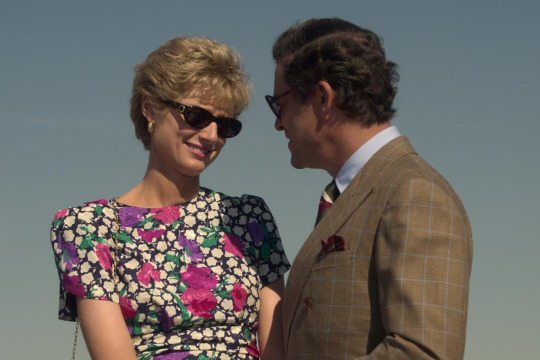
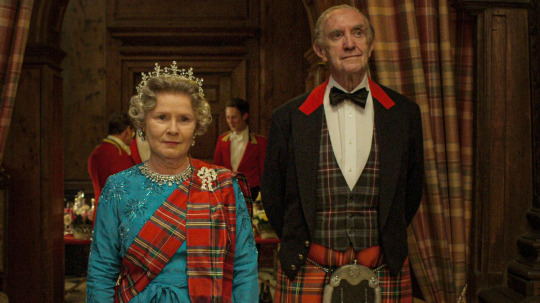
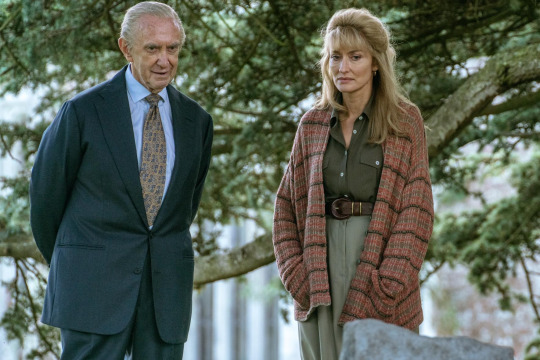
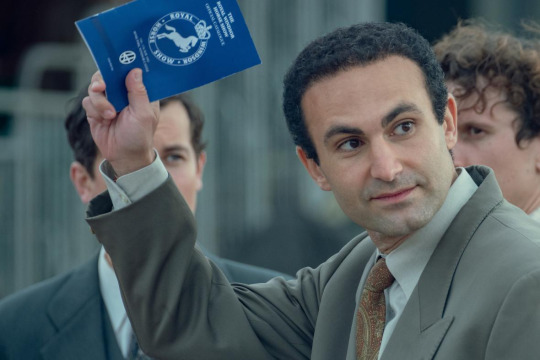




Photo 1-6 Keith Bernstein/Netflix via The Sunday Times (Original Caption: Elizabeth Debicki as Diana with Dominic West as Charles, A hard reign: Imelda Staunton as the Queen and Jonathan Pryce as Prince Philip, Jonathan Pryce with Natascha McElhone as Penelope Knatchbull, Khalid Abdalla as Dodi Fayed, Dominic West as Charles and Elizabeth Debicki as Diana with Teddy Hawley as Harry and Timothee Sambor as William, and Queen of hearts: Debicki as a downcast Diana.)
Photo 7 & 8 Keith Bernstein/Netflix were published earlier.
Why The Crown’s new season is the most controversial yet
Benji Wilson
Saturday October 15 2022, 6.00pm BST, The Sunday Times
***SPOILERS***
Elizabeth II gets jealous, Prince Charles plots to depose her and Philip finds a young female friend. Series five of the Netflix drama tackles the royals’ nightmare 1990s
In the new series of The Crown we see Diana, Princess of Wales sitting on the sofa at Kensington Palace watching an ITV special called The Monarchy: The Nation Decides. The host, Trevor McDonald, poses the question: “Do you want a monarchy?” for the public to phone up and weigh in on — Diana picks up the phone and is seen voting no, again and again.
The programme really did happen — the result was 66 per cent in favour of the monarchy, 34 per cent against. But Diana voting is dramatic licence. This is what The Crown does, artfully blurring fact and fiction — and attracting millions of viewers. The fifth series of the Netflix hit comes out on November 9, nine weeks after the death of Her Majesty the Queen. Even if the series were a fawning biopic there would be accusations of insensitive timing but this one is set to stoke more fires than ever. The Sunday Times has seen all ten episodes — the first publication to do so — and as with previous series it makes for uncomfortable viewing for the Palace.
The Crown may be a drama, but it has an impact on our views of the royal family. The new series begins in 1991 with Charles and Diana’s doomed “second honeymoon” in the Med, takes in the Queen’s annus horribilis and stops before Diana’s death in 1997. No shortage of drama then.
The series was written at least a year before the Queen died, and filming was completed many months ago. It was to have been most noteworthy as an inauguration for The Crown’s third new cast, with Imelda Staunton taking over from Olivia Colman as the Queen, Jonathan Pryce from Tobias Menzies as the Duke of Edinburgh, Dominic West succeeding Josh O’Connor as Charles and Elizabeth Debicki following Emma Corrin as Diana.
What this series does is remind us how quickly public opinion of the royal family as individuals and an institution has changed over the years. Wherever you stand on the monarchy, The Crown is going to provoke heated discussion. Spoilers ahead . . .
Prince Philip’s new friend
Natasha McElhone joins the cast as Penelope Knatchbull, Countess Mountbatten of Burma, a close friend of Prince Philip’s until his death. Penny is the daughter of the Angus Steakhouse founder, Reginald Eastwood, and became part of the royal inner circle through her husband, Norton Knatchbull (it is a small royal world; Norton Knatchbull was Philip’s godson and a year above Prince Charles at the boarding school Gordonstoun).
Penny was 26 when she met Philip, then 58, and we see them becoming close friends, bonding over a shared love of carriage driving. When Penny’s five-year-old daughter Leonora died of kidney cancer in 1991, Philip stepped in to offer support.
Their friendship endured — Penny, now 69, was the only non-royal to attend Philip’s funeral service at Windsor Castle when it was scaled back because of Covid restrictions. The Crown speculates whether Penny and the duke were ever more than close friends.
When Philip meets Penny, as The Crown tells it, he is feeling useless and wanting interests outside the royal bubble. In The Crown Penny — a young, chic countryside countess — becomes a confidante for Philip. We see them alone discussing how he and the Queen have “grown in separate directions”. While out carriage driving together they touch hands — the camera zooms in and lingers on the touch — and he gives her his private phone number.

Knatchbull at Prince Philip’s funeral MAX MUMBY/GETTY IMAGES
At the end of the episode the Queen asks him if he thinks husbands and wives should keep secrets from one another in a marriage, intimating that she is aware something might be amiss.
This is familiar territory for The Crown: series two dramatised several allegations of the duke’s infidelity, including with the Russian ballerina Galina Ulanova, and this will only heighten speculation about Philip.
Penny’s beauty is readily acknowledged by the duke and the Queen in a bedtime discussion. He tells his wife that he has given up his autonomy and his career to be married to her and points out that they have different interests and passions — he wants companionship and the carriage-driving gang provide that. The Queen snaps back that his carriage-driving companion is his godson’s wife, half his age. “It’s friendship, Lilibet,” the duke says. “It’s not that sort of companionship. That would just make me even more lonely.”
Nevertheless, the Queen does feel compromised. In a key scene Penny is summoned to the stables at Windsor Castle for a reckoning. She has concluded — at the duke’s prompting — that Penny should be brought in to the royal family, not pushed out. “Should people happen to see the Duke of Edinburgh out and about with a beautiful younger companion it would be an irritation if they felt at liberty to jump to any wrong conclusions,” she says to Penny. “So why don’t you come in the car with me to church this Christmas at Sandringham? Nip all that in the bud.’”
Was the Queen a bad mother?
In 1992 Charles came to Windsor Castle to persuade his mother that he and Diana should separate officially. This was the Queen’s annus horribilis —three out of her four children were having marriage breakdowns, with the Duchess of York’s affair with her financial advisor revealed in the papers with a photograph of John Bryan sucking Sarah Ferguson’s toe. In The Crown this prompts a testy discussion between Charles and the Queen. “I’ve done as you asked, Mummy,” he says. “I’ve tried to make it work for 11 years. But there comes a point . . .”
It leads to a wider discussion about the marital difficulties of the Queen’s children’s and the whole role of the royal family as a moral example to the nation. At one point Charles says in exasperation that “if we were an ordinary family and social services came to visit they would have thrown us into care and you [the Queen] into jail”.
The Queen is later shown talking to the Archbishop of Canterbury George Carey (played by Richard Rycroft) and conceding that such a run of broken relationships “begins to look like parental failure of the most awful kind”. As with most private conversations in The Crown, there is no verbatim record of either of these conversations. But in his 1994 authorised biography Charles did describe himself as “emotionally estranged” from his parents, while craving the “affection and appreciation” from them that they were “unable or unwilling” to offer.
Tampongate
Charles’s call to Camilla in 1989, recorded and sold to the press by an amateur radio operator, is featured here, and although the tape has been doing the rounds on TikTok since King Charles’s accession, our new monarch won’t thank Netflix for dredging the whole thing up again. In the tape, the full transcript of which was published by Sunday People in 1993, Charles says he wants to “live inside your trousers” and would therefore like to come back in another life as “a Tampax”.
In context, however, the tampongate episode is part of a more measured assessment of Charles’s character — the call is shown as part of a touching, private moment when Charles, on his own at a shooting weekend with friends, calls Camilla at her home to tell her how much he misses her. They bat ever more risqué suggestions back and forth about precisely what they would do were they with one another, but throughout it is a scene of genuine affection rather than lewdness.
The same episode also takes great pains to show Charles as a moderniser and champion for youth through the creation of the Prince’s Trust. He’s even shown attempting to breakdance at a Prince’s Trust event in 1985 where he is invited to the dancefloor. This may be more embarrassing than tampongate (highly recommended — it’s available on YouTube); our new King is willing but ultimately lacks rhythm.
Did Charles want mum out of the way?
For years Charles’s longing for the top job has been a running joke in Private Eye, but The Crown says unequivocally that he was indeed a frustrated king-in-waiting. Charles is shown summoning John Major (Jonny Lee Miller) to Highgrove for a secret meeting and effectively pitching to replace his mother. “What makes the Conservative Party successful? Its instinct for renewal and its willingness to make way for someone younger. For almost 60 years my great-great-grandfather Edward VII was kept waiting in the wings. He longed to be given responsibilities but his mother refused. And yet when his time came he proved his doubters wrong and his reign was a triumph,” he tells Major. Charles asks that Major, when he comes to Balmoral, judge for himself “whether this institution is in safe hands”.
The angriest he gets in the whole run is when confronting Diana with her comments from the Bashir interview that he was “unfit to be king”. “The expectation, the waiting for it [being king] to happen — look how miserable it’s made you,” she says over tea at Kensington Palace. “It’s not the waiting that’s made me miserable,” he counters. “It’s the years spent rotting in a marriage to someone trying to destroy me.”
Waltz with Bashir
The tell-all Diana interview in 1995, in which she said there were three people in her marriage, was watched by nearly 23 million viewers in the UK, or39.3 per cent of the population at the time. It isn’t recreated here — although the BBC says it will never air it again, you can find it on the internet — but Netflix and the writer Peter Morgan are pretty clear who is to blame for it happening. Martin Bashir (played by Prasanna Puwanarajah) is shown forging documents then lying to Earl Spencer. Ironically, given all that followed, Bashir then assures Diana that she should go with him, and not Oprah Winfrey, for example, because then she would be “protected by the best brand name in the world for integrity — the BBC”.
Diana v the deep state
Was Diana bugged by MI5? The Crown says indisputably that she was. There are numerous scenes of Diana roaming a deserted Kensington Palace, phoning friends and staff. Often the calls end with her hearing strange clicks and screaming down a crackling line at whoever might be listening in. In one incident the brake cables on her car appear to have been cut, leading to a dangerous near miss. The implication in The Crown is that Diana’s butler Paul Burrell’s “dark forces” were very much at work and that the Palace was behind them. Debicki’s Diana is superb, portrayed as lost, isolated and paranoid — but with good reason.
Fayed, Dodi and Diana
An entire episode is given over to Mohamed Al Fayed (Salim Daw, Oslo), his son Dodi (Khalid Abdalla, The Kite Runner) and their obsession with the royal family. Both actors, in particular Daw, are terrific, breathing life into figures portrayed so often as pantomime villains. For Fayed, the royal family was the golden ticket to entry and acceptance into British high society. The suggestion is that by spurning Fayed’s attempts to buy his way into royal circles (sponsoring a horse trial that he thought would get him to sit next to the Queen; buying and refurbishing Edward and Wallace Simpson’s French villa, then returning the contents to the royal family), the monarchy drove Diana towards the family of a fellow outsider.
Britannia for the scrapyard?
Episode one sets up the Royal Yacht Britannia as a metaphor for the Queen — “a floating, seagoing expression of me” is how she describes what she also calls her favourite home (before even Balmoral). The problem is that others, namely Charles, Philip and the British public, see “the boat” as outdated: “She’s so obviously past her best.” Should millions of pounds of public money be spent to keep the edifice afloat or should it be scrapped? Spot the metaphor — the relevance of the monarchy is a thread. Discussions take place just as a Sunday Times poll reveals that the public would like the Queen to be replaced by Prince Charles.
Series five of The Crown is on Netflix from November 9
Source: Why The Crown’s new season is the most controversial yet
Benji Wilson, The Sunday Times October 15 2022
♚
#the crown netflix#the crown#imelda staunton#elizabeth debicki#natascha mcelhone#the crown spoilers#khalid abdalla#dominic west#jonathan pryce#the crown season 5#the crown cast#annus horribilis#richard rycroft#prasanna puwanarajah#salim daw#timothee sambor#teddy hawley#thecrownnet
59 notes
·
View notes
Note
3, 5, 23, 36, for your diwk ask!
Thanks for your qs, I don't know why I do this to myself, I'm the worst at choosing stuff! But I'll try!! 😘 (I already know I won't be able to go with one for any of these.. sorry in advance)
3. Favourite music video?
So difficult, they've done so many good ones!!!
Teddy Picker, R U Mine?, TBHC, You and I with Richard Hawley, Cornerstone.
Honorable mention to Crying Lightning
5. Favourite Alex Turner hair era?
Immediate response is the ethereal creature of Humbug baby. Also the luscious locks of EYTCE. And of course my soft spot, the early days of WPSIA 💖
23. Favourite TLSP song?
Absolutely impossible to pick one!!
The Element of Surprise, Used To Be My Girl, Hang The Cyst, Pattern, Gas Dance, Aviation, Standing Next To Me, Sequels, The Age Of The Understatement
36. Favourite song from each album?
Most difficult question of all time!! I'm giving myself two... Or more...
WPSIA - From The Ritz To The Rubble, Red Light Indicates Doors Are Secured, A Certain Romance
FWN - Teddy Picker, Fluorescent Adolescent, Do Me A Favour
Humbug - Secret Door, Jeweller's Hands, Fire And The Thud, Dance Little Liar
SIAS - Don't Sit Down Cause I've Moved Your Chair, All My Own Stunts, Piledriver Waltz
AM - Fireside, I Want It All, R U Mine?
TBHC - American Sports, TBHC, Golden Trunks, Science Fiction
The Car - Perfect Sense, Mr Schwartz, The Car, Sculptures
Thank you 💕✨
6 notes
·
View notes
Text
From August 28th to September 1st, 2023
28-08-23
BASEMENT JAXX “Remedy”; TENGGER CAVALRY “Cavalry Folk”; BATTLEFIELD BAND “Home Ground”; THE MICROPHONES “The Glow, Pt. 2”; 808 STATE “Newbuild”; ALVVAYS “Antisocialite”; BURNING SPEAR “Studio One Presents Burning Spear”; FLAMING LIPS “The Terror”; STEEL PULSE “Babylon The Bandit”; JACKIE WILSON “So Much”; SWASHBUCKLE “Crime Always Pays…”
29-08-23
WAYLANDER “Reawakening Pride Once Lost”; KATE RUSBY “Sleepless”; HORSLIPS “The Man Who Built America”; COLDCUT “Sound Mirrors”; STALINGRAD “Pulya”; TURISAS “Battle Metal”; WIND ROSE “Wintersaga”; BUTTHOLE SURFERS “Humpty Dumpty LSD”; FINNTROLL “Nifelvind”; VIOLENT FEMMES “Violent Femmes”; KHALED “Khaled”
30-08-23
ISAAC HAYES “The Isaac Hayes Movement”; MOVING HEARTS “Live Hearts”; WIND ROSE “Wardens Of The West Wind”; PETER TOSH “Bush Doctor”; MERCURY REV “All Is Dream”; THE FLAMING LIPS “The Soft Bulletin”; GRACE PETRIE “Queer As Folk”; THE PASTELS ”Sittin’ Pretty” ; THE SUPREMES “Where Did Our Love Go”; DINOSAUR JR. “Hand It Over”; STALINGRAD “Dachniki”
31-08-23
BLINK 182 “Dude Ranch”; RICHARD HAWLEY “Coles Corner”; DESCENDENTS “Milo Goes To College”; THE PASTELS “Mobile Safari”; THE TEDDY BEARS “The Teddy Bears Sing”; MOVING HEARTS “Live In Dublin”; ERIC BOGLE “Now I’m Easy”; KING SUNNY ADE AND HIS AFRICAN BEATS “Juju Music”; BOOGIE DOWN PRODUCTIONS “Live Hardcore Worldwide”; SAVATAGE “Hall Of The Mountain King”; RAY STEVENS “Travelin’ With Ray”; SWASHBUCKLE “Back To The Noose”; ARCADE FIRE “Reflektor”; THE FALL “Hex Enduction Hour”; RUTH BROWN “Ruth Brown”; BASEMENT JAXX “Kish Kash”
01-09-23
HORSLIPS “The Tain”; MS. DYNAMITE “A Little Deeper”; SCOTT BRADLEE’S POSTMODERN JUKEBOX “Jazz Age Thirst Trap”; SEPULTURA “Arise”; SUICIDAL TENDENCIES “Suicidal Tendencies”; MERCURY REV “Deserter’s Songs”; RUNNING WILD “Rapid Foray”
0 notes
Text
Ginny Hogan
Josh Hawley, best known for fleeing a mob he helped incite, has written a book on manhood. In Hawley’s defense, he began writing the book before everyone found out about the running-away situation. But it was, unfortunately, after he did the running.
In Manhood, the Missouri senator argues that men are failing, that American masculinity is under siege by “the left” (he rarely gets more specific), and that the solution to this crisis is Bible study and a resurrected appreciation for bygone masculine virtues like courage and strength, while leaving the caregiving professions to the ladies.
I want to begin by acknowledging the value of asking, “Are men treated unfairly?” It’s too easy to dismiss the question. Men are as much a part of society as anyone else, and if there are reasons to believe that recent cultural and political changes are offering them a raw deal, we should probably investigate. And while I wouldn’t go so far as to say that Hawley’s book isn’t misogynistic (there’s a whole chapter on how all men can be kings), I’ll admit that, on the whole, Hawley isn’t completely blaming women for men’s circumstances. Hawley and I have a lot in common, too: Our grandfathers were both Midwestern farmers named Harold, our fathers were both bankers, we both went to Catholic high schools, and to be completely honest, I too would have run away from the January 6 rioters. So it’s not surprising that we can find some common ground.
While Hawley isn’t wrong when he recognizes that something’s up with men, he wildly misses the mark on exactly what that something is. Specifically, he advocates a return to ancient values. He thinks all men need to get married, as a man’s job is to take a “vow” and then “endure” (which feels unnecessarily rude to his own wife). He mocks men who live with their parents, critiques unemployed men (especially those hooked on painkillers), and shames a former student for admitting that he didn’t feel ready to have kids. To be honest, I’m not sure I can imagine a less productive message than encouraging men to become fathers before they’re ready. Hawley is only interested in helping men live the exact same life that he himself leads, even if that life isn’t available (or even desirable) to them. According to recent studies, it turns out that a slight majority of Americans did not attend Yale Law School or receive campaign donations from Peter Thiel.
No one, myself included, should read this book. I was prepared for all the God-talk; I was less ready for the dangling modifiers. Hawley is awfully repetitive and dull. For much of the book, he leans on familiar right-wing canards, such as that “the left” denies the existence of “men” and “women.” We all know this to be a straw man; nothing about acknowledging the existence and humanity of a transgender person suggests a denial of the same for a cisgender man or woman.
Hawley complains about “the left’s” fight to end masculinity, but he ultimately puts the onus on the male reader to fight back and reclaim his own. The bulk of the book is an analysis of six male imperative identities: Husband, Father, Warrior, Builder, Priest, and King—just like the Meredith Brooks song. These aren’t suggested archetypes; it appears men are expected to be all six.
The structure of each chapter is, loosely: personal anecdote, biblical analysis, critique of “the left,” unrelated fact about Teddy Roosevelt. The biblical parts are largely worthless. While he’s not without criticism for his biblical pals (Adam in particular), Hawley’s general claim is that if men copied the male protagonists of the Bible, they’d be OK. For example, as long as they acted more like David and built a whole city from scratch, they might be able to thrive. Yet he conveniently skips the part of David’s story where he sent one of his generals to die because he had the hots for the man’s wife. In fact, Hawley skips over everything “unmanly” (according to him) about the biblical men. For example, most people in the Bible lived with their parents—it was, in fact, a huge deal when an adult Jacob ran away from home.
Amid the biblical lessons, Hawley gets into what’s likely to be the most headline-grabbing section of the book: “Cheap Sex.” Here, Hawley goes after the porn industry. Again, I don’t wholly disagree—there are certainly problems with porn. Hawley, however, believes porn’s only victims are its viewers. He inundates the reader with statistics on porn’s popularity; the place densest with hard facts is the place they’re least necessary (we all know porn is popular). His rundown of stats, to me, screams, “I’m not the only one, OK?” We believe you, Josh. And if your “manhood” has been affected by pornography, modern medicine is here to help.
We can and should mock Hawley, but we’re taking a risk if we don’t read between the lines. The most notable parts of the book aren’t about the Bible or sex or porn or even masculinity. If you’re going to read any chapter of Manhood, skim the one on “Builders.”
Now, the book is explicitly directed to Christian, cisgender straight men, as Hawley barely believes in any other kind of dude. But he does very little to explain why either our contemporary malaise or virtues such as courage are unique to these fellows. However, for the sake of argument, I’ll play ball and acknowledge the suffering of the Christian, cisgender straight guy. I’ll admit he’s no longer valued for the things he once prided himself on and that the new economy doesn’t feel built for him. I’ll admit that ridiculing men isn’t the answer. I’d like to help but what does Josh think is the answer?
Hawley’s entry point to decrying the left throughout the book is Epicurus, the Greek philosopher and Hawley’s longtime obsession: In a 2010 essay for National Review, he argued that “the left” upholds the Epicurean ideal of individual hedonism over the best interests of the herd. Hawley’s update to this is that “the left’s” Epicurean solution to the problem of manhood is to try to change men’s character (which is, incidentally, the opposite of individualism). As he writes, those mean leftists are trying to change what it means to be a man:
[Get] men to think differently, to reject outmoded stereotypes for more modern, enlightened notions. Adjust the ideology, in other words. Teach boys that aggressiveness is not linked to biology, and that the notion of masculine assertiveness is just another—and dangerous—social construct. Help men find a different set of masculine ideals that don’t lionize the warrior virtues.
It took me a beat to see Hawley’s exact problem with this approach, but after reading the entire book and returning to it, I now see which words he wants the reader to disparage. “Teach.” “Help.” “Adjust.” The idea that men would need any kind of aid. Because, contrary to the book’s title, Hawley isn’t telling men to be more “masculine.” He’s telling men—specifically, the working class—to solve their own problems. Because Josh Hawley sure as shit isn’t going to.
A consistent through line in Manhood is Hawley’s unsettling obsession with restraint. He clearly takes pride in his own body, evidenced by the inclusion of a gratuitous story about strangers asking him if he were an athlete. The only thing he apologizes for—in the entire book—is letting his kids eat doughnuts once a week. In villainizing the Epicurean left, he argues that self-control is the solution. As he writes, “Every man can be a man of liberty. He can know the freedom of self-control and the agency it brings…. Put another way, a man can know what it means to rule.” And then, more explicitly: “[Blue-collar] jobs have disappeared overseas or been simply eliminated. In their stead, our political leaders offer government benefits—welfare, dependency. Dependence is in fact a temptation to every man, in every age.”
Right after this passage, he ridicules a friend’s son for getting fired from his job at a fast-food restaurant.
Maybe Hawley thinks it’s the responsibility of the fast-food employee to keep his job. But let’s say he does—where does that get the fast-food employee? The minimum wage in Missouri is $12 an hour—almost $4 below a livable wage in the state (for someone with no children; the gap is even wider if they have kids, which Hawley believes they must). Whose responsibility is that? What has Hawley done to help men who are struggling? What has he—a United States senator—ever done to empower the working class? Hawley doesn’t care about the working people of Missouri; he doesn’t even live there.
Rather than working across the aisle to boost the minimum wage, Hawley proposed his own convoluted bill with no chance of passing. In the chapter on the diminishing value of blue-collar work, Hawley doesn’t mention unions even once. He’s talked a big pro-union game, like when he lambasted President Biden for selling out rail workers. But his actions? Hawley opposed efforts to roll back Missouri’s anti-union “right to work” laws; his lifetime AFL-CIO score is 4 percent—and where is his support for the pro-worker PRO Act?
While others suggest retraining men for careers that have shortages—such as teaching—Hawley argues that we should stop trying to push men into jobs that don’t appeal to their masculinity. And despite his criticism of Big Tech, his very political career as we know it exists because of early support from Peter Thiel. And may we never forget that in his most iconic moment, he voted against upholding the results of the 2020 election and, in so doing, tried to deny all of us—of all genders, classes, and races—our most basic tool for holding the powerful to account and improving our circumstances: our vote.
I started this review by making fun of Hawley for running away from the January 6 insurrectionists. And we should never stop making fun of that. But we can’t let it be the only thing people know about him. Running from danger isn’t the worst thing he’s ever done, and I’m not sure who would have benefited if Hawley had stood his ground and started swinging fists at the rioters at the Capitol.
It’s what he did before and after that. There are many different ways to be a man, but the type we need is someone who takes responsibility for his actions. Here are Hawley’s actions: All he’s done, for his entire career, is pin the blame on anyone but himself. By that standard of manhood alone, I feel comfortable saying Hawley’s not one.
0 notes
Text
Ginny Hogan
Josh Hawley, best known for fleeing a mob he helped incite, has written a book on manhood. In Hawley’s defense, he began writing the book before everyone found out about the running-away situation. But it was, unfortunately, after he did the running.
In Manhood, the Missouri senator argues that men are failing, that American masculinity is under siege by “the left” (he rarely gets more specific), and that the solution to this crisis is Bible study and a resurrected appreciation for bygone masculine virtues like courage and strength, while leaving the caregiving professions to the ladies.
I want to begin by acknowledging the value of asking, “Are men treated unfairly?” It’s too easy to dismiss the question. Men are as much a part of society as anyone else, and if there are reasons to believe that recent cultural and political changes are offering them a raw deal, we should probably investigate. And while I wouldn’t go so far as to say that Hawley’s book isn’t misogynistic (there’s a whole chapter on how all men can be kings), I’ll admit that, on the whole, Hawley isn’t completely blaming women for men’s circumstances. Hawley and I have a lot in common, too: Our grandfathers were both Midwestern farmers named Harold, our fathers were both bankers, we both went to Catholic high schools, and to be completely honest, I too would have run away from the January 6 rioters. So it’s not surprising that we can find some common ground.
While Hawley isn’t wrong when he recognizes that something’s up with men, he wildly misses the mark on exactly what that something is. Specifically, he advocates a return to ancient values. He thinks all men need to get married, as a man’s job is to take a “vow” and then “endure” (which feels unnecessarily rude to his own wife). He mocks men who live with their parents, critiques unemployed men (especially those hooked on painkillers), and shames a former student for admitting that he didn’t feel ready to have kids. To be honest, I’m not sure I can imagine a less productive message than encouraging men to become fathers before they’re ready. Hawley is only interested in helping men live the exact same life that he himself leads, even if that life isn’t available (or even desirable) to them. According to recent studies, it turns out that a slight majority of Americans did not attend Yale Law School or receive campaign donations from Peter Thiel.
No one, myself included, should read this book. I was prepared for all the God-talk; I was less ready for the dangling modifiers. Hawley is awfully repetitive and dull. For much of the book, he leans on familiar right-wing canards, such as that “the left” denies the existence of “men” and “women.” We all know this to be a straw man; nothing about acknowledging the existence and humanity of a transgender person suggests a denial of the same for a cisgender man or woman.
Hawley complains about “the left’s” fight to end masculinity, but he ultimately puts the onus on the male reader to fight back and reclaim his own. The bulk of the book is an analysis of six male imperative identities: Husband, Father, Warrior, Builder, Priest, and King—just like the Meredith Brooks song. These aren’t suggested archetypes; it appears men are expected to be all six.
The structure of each chapter is, loosely: personal anecdote, biblical analysis, critique of “the left,” unrelated fact about Teddy Roosevelt. The biblical parts are largely worthless. While he’s not without criticism for his biblical pals (Adam in particular), Hawley’s general claim is that if men copied the male protagonists of the Bible, they’d be OK. For example, as long as they acted more like David and built a whole city from scratch, they might be able to thrive. Yet he conveniently skips the part of David’s story where he sent one of his generals to die because he had the hots for the man’s wife. In fact, Hawley skips over everything “unmanly” (according to him) about the biblical men. For example, most people in the Bible lived with their parents—it was, in fact, a huge deal when an adult Jacob ran away from home.
Amid the biblical lessons, Hawley gets into what’s likely to be the most headline-grabbing section of the book: “Cheap Sex.” Here, Hawley goes after the porn industry. Again, I don’t wholly disagree—there are certainly problems with porn. Hawley, however, believes porn’s only victims are its viewers. He inundates the reader with statistics on porn’s popularity; the place densest with hard facts is the place they’re least necessary (we all know porn is popular). His rundown of stats, to me, screams, “I’m not the only one, OK?” We believe you, Josh. And if your “manhood” has been affected by pornography, modern medicine is here to help.
We can and should mock Hawley, but we’re taking a risk if we don’t read between the lines. The most notable parts of the book aren’t about the Bible or sex or porn or even masculinity. If you’re going to read any chapter of Manhood, skim the one on “Builders.”
Now, the book is explicitly directed to Christian, cisgender straight men, as Hawley barely believes in any other kind of dude. But he does very little to explain why either our contemporary malaise or virtues such as courage are unique to these fellows. However, for the sake of argument, I’ll play ball and acknowledge the suffering of the Christian, cisgender straight guy. I’ll admit he’s no longer valued for the things he once prided himself on and that the new economy doesn’t feel built for him. I’ll admit that ridiculing men isn’t the answer. I’d like to help but what does Josh think is the answer?
Hawley’s entry point to decrying the left throughout the book is Epicurus, the Greek philosopher and Hawley’s longtime obsession: In a 2010 essay for National Review, he argued that “the left” upholds the Epicurean ideal of individual hedonism over the best interests of the herd. Hawley’s update to this is that “the left’s” Epicurean solution to the problem of manhood is to try to change men’s character (which is, incidentally, the opposite of individualism). As he writes, those mean leftists are trying to change what it means to be a man:
[Get] men to think differently, to reject outmoded stereotypes for more modern, enlightened notions. Adjust the ideology, in other words. Teach boys that aggressiveness is not linked to biology, and that the notion of masculine assertiveness is just another—and dangerous—social construct. Help men find a different set of masculine ideals that don’t lionize the warrior virtues.
It took me a beat to see Hawley’s exact problem with this approach, but after reading the entire book and returning to it, I now see which words he wants the reader to disparage. “Teach.” “Help.” “Adjust.” The idea that men would need any kind of aid. Because, contrary to the book’s title, Hawley isn’t telling men to be more “masculine.” He’s telling men—specifically, the working class—to solve their own problems. Because Josh Hawley sure as shit isn’t going to.
A consistent through line in Manhood is Hawley’s unsettling obsession with restraint. He clearly takes pride in his own body, evidenced by the inclusion of a gratuitous story about strangers asking him if he were an athlete. The only thing he apologizes for—in the entire book—is letting his kids eat doughnuts once a week. In villainizing the Epicurean left, he argues that self-control is the solution. As he writes, “Every man can be a man of liberty. He can know the freedom of self-control and the agency it brings…. Put another way, a man can know what it means to rule.” And then, more explicitly: “[Blue-collar] jobs have disappeared overseas or been simply eliminated. In their stead, our political leaders offer government benefits—welfare, dependency. Dependence is in fact a temptation to every man, in every age.”
Right after this passage, he ridicules a friend’s son for getting fired from his job at a fast-food restaurant.
Maybe Hawley thinks it’s the responsibility of the fast-food employee to keep his job. But let’s say he does—where does that get the fast-food employee? The minimum wage in Missouri is $12 an hour—almost $4 below a livable wage in the state (for someone with no children; the gap is even wider if they have kids, which Hawley believes they must). Whose responsibility is that? What has Hawley done to help men who are struggling? What has he—a United States senator—ever done to empower the working class? Hawley doesn’t care about the working people of Missouri; he doesn’t even live there.
Rather than working across the aisle to boost the minimum wage, Hawley proposed his own convoluted bill with no chance of passing. In the chapter on the diminishing value of blue-collar work, Hawley doesn’t mention unions even once. He’s talked a big pro-union game, like when he lambasted President Biden for selling out rail workers. But his actions? Hawley opposed efforts to roll back Missouri’s anti-union “right to work” laws; his lifetime AFL-CIO score is 4 percent—and where is his support for the pro-worker PRO Act?
While others suggest retraining men for careers that have shortages—such as teaching—Hawley argues that we should stop trying to push men into jobs that don’t appeal to their masculinity. And despite his criticism of Big Tech, his very political career as we know it exists because of early support from Peter Thiel. And may we never forget that in his most iconic moment, he voted against upholding the results of the 2020 election and, in so doing, tried to deny all of us—of all genders, classes, and races—our most basic tool for holding the powerful to account and improving our circumstances: our vote.
I started this review by making fun of Hawley for running away from the January 6 insurrectionists. And we should never stop making fun of that. But we can’t let it be the only thing people know about him. Running from danger isn’t the worst thing he’s ever done, and I’m not sure who would have benefited if Hawley had stood his ground and started swinging fists at the rioters at the Capitol.
It’s what he did before and after that. There are many different ways to be a man, but the type we need is someone who takes responsibility for his actions. Here are Hawley’s actions: All he’s done, for his entire career, is pin the blame on anyone but himself. By that standard of manhood alone, I feel comfortable saying Hawley’s not one.
0 notes
Text
Who Are 'The Working Class' and Aren't Most of Us Already Them?
by Don Hall
Midterms! Holy shit. More money is being spent on campaign ads in this concentrated period than Big Pharma spends on convincing old people that shingles is an existential threat and they must purchase a treatment because shingles are the END OF DEMOCRACY.
Beyond the hyperbolic rhetoric that states quite clearly and with great repetition that a vote for pretty much anyone of any ideological stripe is the final nail in the coffin for our democratic way of life, there is the drumbeat that gives us that delicious rhythm of the Great Abandonment of the Working Class. The image of this elusive and neglected group is malleable based on where you stand on, you know, issues.
If you're on the right side of the purity fence, this working class looks like a bunch of white people wearing overalls, their hands are permanently dirty from fixing cars, fixing roads, fixing sewers, carrying hay bales, and dutifully frustrated that the Big Cities are dictating that their kids unnecessarily learn about racism in public schools. They also are both mystified and a bit disgusted with the sexual inaction of everyone and would prefer the teachers stick to teaching their children to read and write rather than gender identify.
Over on the left part of the Great Yard, the working class looks like black people working in restaurants, brown people working in Amazon warehouses, black and brown people laboring in migrant jobs, all while dealing with the idea that their forebears were scarred by slavery, Jim Crow, anti-Latino racism, and woefully underfunded schools in neighborhoods that haven't seen a pothole fixed since before Roosevelt was in office (Teddy not Frank).
Suspiciously absent from this wildly diverse group are Asians but that is because, despite the rampant white supremacy laced into every aspect of American life, those Asians make considerably more money, their kids are smarter and do better in school, and pretty much smoke white people on every metric measurable except for weight class and the whites, blacks, and browns beat the Asians by a solid ton of unnecessary gut fat. Gotta win at something, right?
Like so many of our accepted terms, working class is effectively meaningless but that doesn't stop those crazy Zoomer marketing geniuses from barking out the label every 4.3 seconds in every campaign ad in between the persistent calls to action to buy shitty processed food and mattresses that guarantee a good night's sleep (hint on the last—be single. You'll sleep like a fucking baby).
I'm squatting in the Heartland, smack dab in the center of the country, and I'm seeing something a bit more nuanced than either of the wonk patrols are willing to see. The working class is, well, most of us.
Luis Lopez is a full-time high school social studies teacher in Wichita. He has a Master's Degree which bumps his annual pay to just under $40,000 a year (with benefits he never uses because the deductibles are kind of ridiculous). On his classroom wall he has an Associate's degree, a Bachelor's degree, and his Master's in frames on display. He is college educated. That isn't working class, right? Wrong. As a public school teacher he makes less than $7.00 an hour considering he spends his nights and weekends grading papers and purchasing things for his class that the school can't afford (like extra pencils, laptop chargers, and lamination for his Dwight Schrute inspirational posters).
Jessica Poole works part-time at the local YMCA, part-time at one of the movie theaters in town, and part-time parking cars at local sporting events. She lives with her aging father and hasn't left the city for a vacation in a decade. Once a week she treats herself to a couple of pints at a downtown hotspot (yes—the irony of a downtown hotspot in Wichita, KS is not lost on me) but feels a little guilty that she can't tip the server much. She has a BLM sticker on her phone case and both PETA and Greenpeace bumper stickers on her Ford F-150 pickup truck.
Ryan Hawley has been at the same body shop on the south side of Wichita for almost thirty years. It's a family-owned place and he can remember when he last got a raise in salary. He does fine. He took a few years to save up some money to buy a speed boat which he takes out on the Arkansas River on weekends in the spring and summer. He's divorced which is why he believes he has the money to get a used Jet Ski soon. He lives in a house his mother left him when she passed but hasn't put any effort to keep it up and resents the idea that he has to mow the grass as a pointless task. He can't recall the last time he read a book. He aligns with Trump but only because he hates the Left.
My guess is that the working class is far less monolithic than is possible in a sixty-second ad that must also include references to guns (either pro or con), abortion (either pro or con), inflation, trans issues, public education, and an acknowledged approval of the message. My thought is that when I hear the phrase the working class it is supposed to evoke imagery of the Other Americans not like me but the reality is that most Americans are making less than $40K a year before taxes, are three bad choices from being homeless, and are sporting a smartphone with a spiderweb of cracks and an operating system two years out of date.
Look around. That MAGA guy wearing a "Let's Go, Brandon" sweatshirt, that woman with the Ruth Bader-Ginsburg bobble head on her dash, that retired man working as a receipt checker at the Wal Mart, that barista, that comic book artist, that poet, that Uber driver? That's the working class and both political parties ignore them because politicians do not want to be working class themselves and the Big Money comes from the wealthy class.
0 notes
Text
The first photos of 'The Crown 5' have been revealed
The first photos of ‘The Crown 5’ have been revealed
The new episodes will show, among other things, the marital turmoil between Prince Charles and Princess Diana
Waiting for The Crown 5, Netflix has released the first photos showing the royal family of the fifth season, with Timothee Sambor and Teddy Hawley as princes William and Harry, Staunton as Elizabeth, Dominic West as prince Charles. And Elizabeth Debicki as Lady Diana.
As per tradition,…

View On WordPress
0 notes
Text
The Crown's Elizabeth Debicki transforms into Princess Diana as she is joined by child actors Timothee Sambor and Teddy Hawley who play Princes William and Harry while filming series five in Spain
#netflix#the crown#british royal family#princess diana#spain#elizabeth debicki#timothee sambor#teddy hawley
1 note
·
View note
Photo




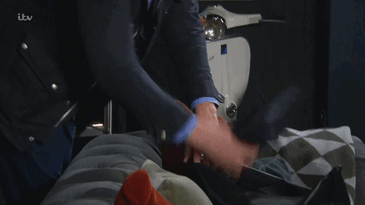
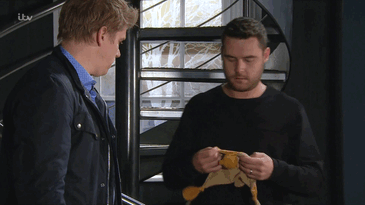
#robert sugden#aaron dingle#robron#ryan hawley#danny miller#seb's toy#a teddy bear#and#a giraffe#real dads#looking after their son so well#it's so moving#pls bring him back#chas dingle#liv flaherty#190318#260718#091118#my set
85 notes
·
View notes
Photo


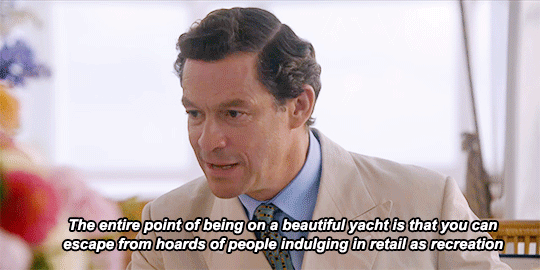


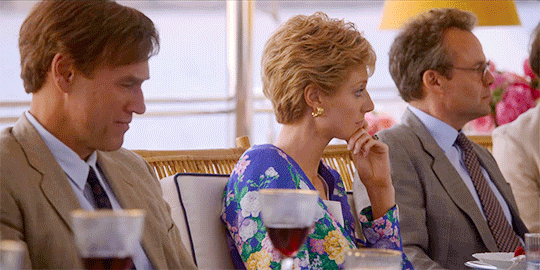
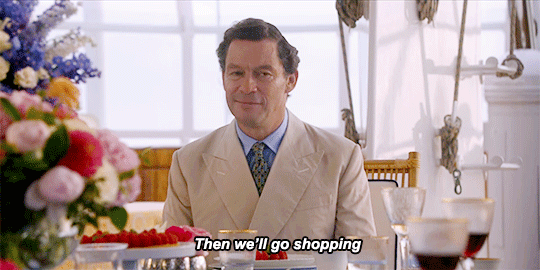

Thanks for sticking up for me. It was brave.
Princess Diana (Elizabeth Debicki) with young Princes Harry (Teddy Hawley) & William (Timothee Sambor)
The Crown 5x01: Queen Victoria Syndrome
**More season 5 content**
#the crown#princess diana#young prince harry#young prince william#prince charles#elizabeth debicki#dominic west#teddy hawley#timothee sambor#season 5#5x01#gifs#season 5 content
60 notes
·
View notes
Video
The Hollywood Reporter Netflix drops first look of the Royal Family in #TheCrown season 5 with Elizabeth Debicki as Princess Diana #THRNews
#the crown netflix#the crown#imelda staunton#lesley manville#the crown spoilers#elizabeth debicki#princess diana#jonny lee miller#jonathan pryce#olivia williams#claudia harrison#the crown season 5#the crown cast#thecrownnet#netflix#sneak peek#the hollywood reporter#video#timothee sambor#teddy hawley
15 notes
·
View notes
Photo

Joker & his Corazón: a DoflaCora Mix
01. Us and Them // Pink Floyd
02. Dirty Night Clowns // Chris Garneau
03. Weird Bed &/or Yes Please // Joe Hawley
04. Aristotle’s Denial // Joe Hawley
05. (Oceans) // Halina Heron
06. Stalker’s Tango // Autoheart
07. I Love You Like An Alcoholic // The Taxpayers
08. Dance Monkey - Stripped Back // Tones and I
09. Under My Skin // Jukebox the Ghost
10. The Masochism Tango // Tom Lehrer
11. Cannibal // Tally Hall
12. Choke // I DONT KNOW HOW BUT THEY FOUND ME
13. Brutus // The Buttress
14. My Hallelujah // Autoheart
15. April // Caravan Palace
16. I Can't Decide // Scissor Sisters
17. Murders // Miracle Musical
18. Lie Lie Lie // Serj Tankian
19. Sex with a Ghost // Teddy Hyde
20. Anything Like Me // Poppy
21. Waltz in E-Major, Op. 15 "Moon Waltz" // Cojum Dip
Spotify | YouTube
#doflacora#DonquixoteWeek2021#one piece#my playlists#dressrosa spoilers#for the cover art whoops#spotify says the playlists are more recent but that's just bc i moved them from my other acct#these have been in the works since.....december#fanmix
38 notes
·
View notes
Text
EXCLUSIVE: The Crown series five: Child actors Timothee Sambor, 11, and Teddy Hawley, 7, transform into young Princes William and Harry as they join Elizabeth Debicki to film in Spain
By Laura Fox For Mailonline - October 8th 2021, 12:23:58 pm
The two unknowns will appear in the Netflix drama as younger depictions of Princess Diana's sons, in the midst of Diana's divorce from her husband Prince Charles.
4 notes
·
View notes
Text
name list!! 🌱
girls:
abra - ada - adley - agnes - alba - albina - alice - alijhah - alma - amari - anita - anne - apricot - aspen - aster - astrid - autumn - avia - bee - bella - beth - betla - billie - birdie - blair - blake - blue - bree - brody - brontë - bug - bumble - calliope - carmen - cecily - cherry - clementine - cleo - clove - daisy - darcy - dasia - dean - devin - dot - echo - eden - ellen - elliott - eloide - ember - esme - esther - ethel - evie - faye - fennel - fern - francine - frankie - gerda - gladys - greta - harlow - hattie - havin - hedwig - heidi - holly - honey - ida - irma - isla - james - jamie - juniper - juno - kaysa - keira - kimber - kiwi - lennon - lily - lolly - lumi - mabel - mads - maggie - maisie - majken - mango - maple - marcy - marley - margo - marley - marshall - max - mika - misha - molls - morgen - morges - nadia - neela - nessa - nin - noah - november - octavia - olga - olive - paula - peach - penelope - peony - pepa - petra - polly - poppy - posy - river - saga - sage - saida - salem - sawyer - scout - shea - shiloh - sigrid - silke - sonya - sterling - sunny - tatum - teal - temple - thea - thyme - timoune - tula - una - val - via - vendela - via - wendy - willow - winnie - wren - wybie
boys:
abel - adrian - alec - andrei - ansel - apollo - apple - arthur - aston - atlas - auggie - august - basil - beetle - benji - blythe - blue - boston - buck - bug - calipo - carlyle - carson - casper - caspian - cian - clay - colin - cole - conan - connor - cosmo - cyan - daniel - edwin - eli - elias - elliott - ellis - emerson - emmett - enoch - enzo - eros - evan - everett - ezra - felix - finley - finn - gil - gilbert - hari - hugo - ivar - jackson - jamal - jasper - jeremiah - jude - jules - julian - kai - kale - kamal - kellan - khalid - kian - lance - lars - lee - lennox - levi - linus - louis - luca - luke - maddox - magnus - mikai - millard - milo - moody - monty - nabil - nero - nino - noe - oak - ogie - ollie - patton - pea - percy - phillip - pierre - rickie - sacha - sage - sam - sean - silas - simon - soren - spencer - tad - talon - teddy - tobias - tobin - toni - ty - urban - victor - vincent - warren - wesley - wyatt - zeke - zion - zippy
surnames:
acres - adler - belle - berry - bloom - blythe - ceres - clarke - cloud - cooper - cricket - critter - ellis - endicott - finney - fenley - glade - gloom - gorski - green - hawley - heron - hill - horton - kamal - kumar - little - meadow - moody - moon - mora - nye - quickly - quincy - reed - roux - ryder - samara - shirley - sprout - strange - sykes - sylva - tapia - tibbits - twig - tye - valley - welsh - wolfe
742 notes
·
View notes
Text
Lena Horne
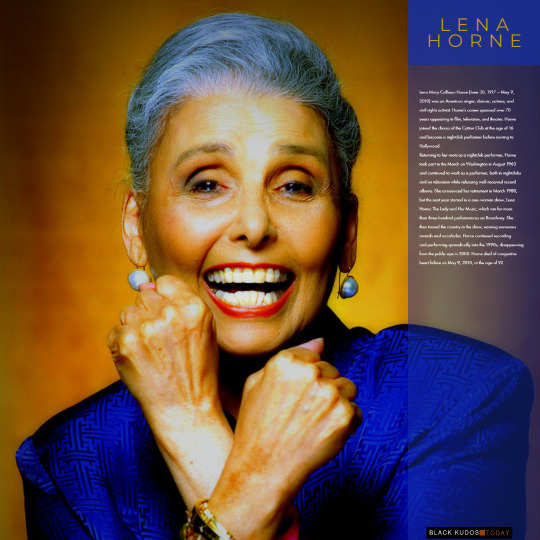
Lena Mary Calhoun Horne (June 30, 1917 – May 9, 2010) was an American singer, dancer, actress, and civil rights activist. Horne's career spanned over 70 years, appearing in film, television, and theater. Horne joined the chorus of the Cotton Club at the age of 16 and became a nightclub performer before moving to Hollywood.
Returning to her roots as a nightclub performer, Horne took part in the March on Washington in August 1963 and continued to work as a performer, both in nightclubs and on television while releasing well-received record albums. She announced her retirement in March 1980, but the next year starred in a one-woman show, Lena Horne: The Lady and Her Music, which ran for more than 300 performances on Broadway. She then toured the country in the show, earning numerous awards and accolades. Horne continued recording and performing sporadically into the 1990s, disappearing from the public eye in 2000. Horne died of congestive heart failure on May 9, 2010, at the age of 92.
Early life
Lena Horne was born in Bedford–Stuyvesant, Brooklyn. She was reportedly descended from the John C. Calhoun family, and both sides of her family were through a mixture of African, Native American, and European descent and belonged to the upper stratum of middle-class, well-educated people. Her father, Edwin Fletcher "Teddy" Horne Jr. (1893–1970), a numbers kingpin in the gambling trade, left the family when she was three and moved to an upper-middle-class African American community in the Hill District community of Pittsburgh, Pennsylvania. Her mother, Edna Louise Scottron (1894–1976), was a granddaughter of inventor Samuel R. Scottron; she was an actress with a black theatre troupe and traveled extensively. Edna's maternal grandmother, Amelie Louise Ashton, was a Senegalese slave. Horne was raised mainly by her grandparents, Cora Calhoun and Edwin Horne.
When Horne was five, she was sent to live in Georgia. For several years, she traveled with her mother. From 1927 to 1929, she lived with her uncle, Frank S. Horne, dean of students at Fort Valley Junior Industrial Institute (now part of Fort Valley State University) in Fort Valley, Georgia, who later served as an adviser to President Franklin Delano Roosevelt. From Fort Valley, southwest of Macon, Horne briefly moved to Atlanta with her mother; they returned to New York when Horne was 12 years old. She then attended Girls High School, an all-girls public high school in Brooklyn that has since become Boys and Girls High School; she dropped out without earning a diploma. Aged 18, she moved to her father's home in Pittsburgh, staying in the city's Little Harlem for almost five years and learning from native Pittsburghers Billy Strayhorn and Billy Eckstine, among others.
Career
Road to Hollywood
In the fall of 1933, Horne joined the chorus line of the Cotton Club in New York City. In the spring of 1934, she had a featured role in the Cotton Club Parade starring Adelaide Hall, who took Lena under her wing. Horne made her first screen appearance as a dancer in the musical short Cab Calloway's Jitterbug Party (1935). A few years later, Horne joined Noble Sissle's Orchestra, with which she toured and with whom she made her first records, issued by Decca. After she separated from her first husband, Horne toured with bandleader Charlie Barnet in 1940–41, but disliked the travel and left the band to work at the Cafe Society in New York. She replaced Dinah Shore as the featured vocalist on NBC's popular jazz series The Chamber Music Society of Lower Basin Street. The show's resident maestros, Henry Levine and Paul Laval, recorded with Horne in June 1941 for RCA Victor. Horne left the show after only six months when she was hired by former Cafe Trocadero (Los Angeles) manager Felix Young to perform in a Cotton Club-style revue on the Sunset Strip in Hollywood.
Horne already had two low-budget movies to her credit: a 1938 musical feature called The Duke is Tops (later reissued with Horne's name above the title as The Bronze Venus); and a 1941 two-reel short subject, Boogie Woogie Dream, featuring pianists Pete Johnson and Albert Ammons. Horne's songs from Boogie Woogie Dream were later released individually as soundies. Horne made her Hollywood nightclub debut at Felix Young's Little Troc on the Sunset Strip in January 1942. A few weeks later, she was signed by Metro-Goldwyn-Mayer. In November 1944, she was featured in an episode of the popular radio series Suspense, as a fictional nightclub singer, with a large speaking role along with her singing. In 1945 and 1946, she sang with Billy Eckstine's Orchestra.
She made her debut at Metro-Goldwyn-Mayer in Panama Hattie (1942) and performed the title song of Stormy Weather based loosely on the life of Adelaide Hall, (1943), at 20th Century Fox, while on loan from MGM. She appeared in a number of MGM musicals, most notably Cabin in the Sky (1943), but was never featured in a leading role because of her race and the fact that her films had to be re-edited for showing in cities where theaters would not show films with black performers. As a result, most of Horne's film appearances were stand-alone sequences that had no bearing on the rest of the film, so editing caused no disruption to the storyline. A notable exception was the all-black musical Cabin in the Sky, although one number from that film was cut before release because it was considered too suggestive by the censors: Horne singing "Ain't It the Truth" while taking a bubble bath. This scene and song are featured in the film That's Entertainment! III (1994) which also featured commentary from Horne on why the scene was deleted prior to the film's release. Lena Horne was the first African-American elected to serve on the Screen Actors Guild board of directors.
In Ziegfeld Follies (1946), she performed "Love" by Hugh Martin and Ralph Blane. Horne lobbied for the role of Julie LaVerne in MGM's 1951 version of Show Boat (having already played the role when a segment of Show Boat was performed in Till the Clouds Roll By, 1946) but lost the part to Ava Gardner, a personal friend in real life. Horne claimed this was due to the Production Code's ban on interracial relationships in films, but MGM sources state she was never considered for the role in the first place. In the documentary That's Entertainment! III, Horne stated that MGM executives required Gardner to practice her singing using Horne's recordings, which offended both actresses. Ultimately, Gardner's voice was overdubbed by actress Annette Warren (Smith) for the theatrical release.
Changes of direction
By the mid-1950s, Horne was disenchanted with Hollywood and increasingly focused on her nightclub career. She made only two major appearances for MGM during the 1950s: Duchess of Idaho (which was also Eleanor Powell's final film); and the 1956 musical Meet Me in Las Vegas. She was blacklisted during the 1950s for her affiliations in the 1940s with communist-backed groups. She would subsequently disavow communism. She returned to the screen three more times, playing chanteuse Claire Quintana in the 1969 film Death of a Gunfighter, Glinda in The Wiz (1978), which was directed by her then son-in-law Sidney Lumet, and co-hosting the MGM retrospective That's Entertainment! III (1994), in which she was candid about her unkind treatment by the studio.
After leaving Hollywood, Horne established herself as one of the premier nightclub performers of the post-war era. She headlined at clubs and hotels throughout the U.S., Canada, and Europe, including the Sands Hotel in Las Vegas, the Cocoanut Grove in Los Angeles, and the Waldorf-Astoria in New York. In 1957, a live album entitled, Lena Horne at the Waldorf-Astoria, became the biggest-selling record by a female artist in the history of the RCA Victor label at that time. In 1958, Horne became the first African-American woman to be nominated for a Tony Award for "Best Actress in a Musical" (for her part in the "Calypso" musical Jamaica) which, at Lena's request featured her longtime friend Adelaide Hall.
From the late 1950s through to the 1960s, Horne was a staple of TV variety shows, appearing multiple times on Perry Como's Kraft Music Hall, The Ed Sullivan Show, The Dean Martin Show, and The Bell Telephone Hour. Other programs she appeared on included The Judy Garland Show, The Hollywood Palace, and The Andy Williams Show. Besides two television specials for the BBC (later syndicated in the U.S.), Horne starred in her own U.S. television special in 1969, Monsanto Night Presents Lena Horne. During this decade, the artist Pete Hawley painted her portrait for RCA Victor, capturing the mood of her performance style.
In 1970, she co-starred with Harry Belafonte in the hour-long Harry & Lena special for ABC; in 1973, she co-starred with Tony Bennett in Tony and Lena. Horne and Bennett subsequently toured the U.S. and U.K. in a show together. In the 1976 program America Salutes Richard Rodgers, she sang a lengthy medley of Rodgers songs with Peggy Lee and Vic Damone. Horne also made several appearances on The Flip Wilson Show. Additionally, Horne played herself on television programs such as The Muppet Show, Sesame Street, and Sanford and Son in the 1970s, as well as a 1985 performance on The Cosby Show and a 1993 appearance on A Different World. In the summer of 1980, Horne, 63 years old and intent on retiring from show business, embarked on a two-month series of benefit concerts sponsored by the sorority Delta Sigma Theta. These concerts were represented as Horne's farewell tour, yet her retirement lasted less than a year.
On April 13, 1980, Horne, Luciano Pavarotti, and host Gene Kelly were all scheduled to appear at a Gala performance at the Metropolitan Opera House to salute the NY City Center's Joffrey Ballet Company. However, Pavarotti's plane was diverted over the Atlantic and he was unable to appear. James Nederlander was an invited Honored Guest and noted that only three people at the sold-out Metropolitan Opera House asked for their money back. He asked to be introduced to Lena following her performance. In May 1981, The Nederlander Organization, Michael Frazier, and Fred Walker went on to book Horne for a four-week engagement at the newly named Nederlander Theatre on West 41st Street in New York City. The show was an instant success and was extended to a full year run, garnering Horne a special Tony award, and two Grammy Awards for the cast recording of her show Lena Horne: The Lady and Her Music. The 333-performance Broadway run closed on Horne's 65th birthday, June 30, 1982. Later that same week, she performed the entire show again to record it for television broadcast and home video release. Horne began a tour a few days later at Tanglewood (Massachusetts) during the weekend of July 4, 1982. The Lady and Her Music toured 41 cities in the U.S. and Canada until June 17, 1984. It played in London for a month in August and ended its run in Stockholm, Sweden, September 14, 1984. In 1981, she received a Special Tony Award for the show, which also played to acclaim at the Adelphi Theatre in London in 1984. Despite the show's considerable success (Horne still holds the record for the longest-running solo performance in Broadway history), she did not capitalize on the renewed interest in her career by undertaking many new musical projects. A proposed 1983 joint recording project between Horne and Frank Sinatra (to be produced by Quincy Jones) was ultimately abandoned, and her sole studio recording of the decade was 1988's The Men in My Life, featuring duets with Sammy Davis Jr. and Joe Williams. In 1989, she received the Grammy Lifetime Achievement Award.
In 1995, a "live" album capturing Horne's Supper Club performance was released (subsequently winning a Grammy Award for Best Jazz Vocal Album). In 1998, Horne released another studio album, entitled Being Myself. Thereafter, Horne retired from performing and largely retreated from public view, though she did return to the recording studio in 2000 to contribute vocal tracks on Simon Rattle's Classic Ellington album.
Civil rights activism
Horne was long involved with the Civil Rights Movement. In 1941, she sang at Cafe Society and worked with Paul Robeson. During World War II, when entertaining the troops for the USO, she refused to perform "for segregated audiences or for groups in which German POWs were seated in front of black servicemen", according to her Kennedy Center biography. Because the U.S. Army refused to allow integrated audiences, she staged her show for a mixed audience of black U.S. soldiers and white German POWs. Seeing the black soldiers had been forced to sit in the back seats, she walked off the stage to the first row where the black troops were seated and performed with the Germans behind her. After quitting the USO in 1945 because of the organization's policy of segregating audiences, Horne financed tours of military camps herself.
She was at an NAACP rally with Medgar Evers in Jackson, Mississippi, the weekend before Evers was assassinated. She also met President John F. Kennedy at the White House two days before he was assassinated. She was at the March on Washington and spoke and performed on behalf of the NAACP, SNCC, and the National Council of Negro Women. She also worked with Eleanor Roosevelt to pass anti-lynching laws. Tom Lehrer mentions her in his song "National Brotherhood Week" in the line "Lena Horne and Sheriff Clark are dancing cheek to cheek" referring (wryly) to her and to Sheriff Jim Clark, of Selma, Alabama, who was responsible for a violent attack on civil rights marchers in 1965. In 1983, the NAACP awarded her the Spingarn Medal.
Horne was a registered Democrat and on November 20, 1963, she, along with Democratic National Committee (DNC) Chairman John Bailey, Carol Lawrence, Richard Adler, Sidney Salomon, Vice-Chairwoman of the DNC Margaret B. Price, and Secretary of the DNC Dorothy Vredenburgh Bush, visited John F. Kennedy at The White House, two days prior to his assassination.
Personal life
Horne married Louis Jordan Jones, a political operative, in January 1937 in Pittsburgh. On December 21, 1937, their daughter, Gail (later known as Gail Lumet Buckley, a writer) was born. They had a son, Edwin Jones (February 7, 1940 – September 12, 1970) who died of kidney disease. Horne and Jones separated in 1940 and divorced in 1944. Horne's second marriage was to Lennie Hayton, who was music director and one of the premier musical conductors and arrangers at MGM, in December 1947 in Paris. They separated in the early 1960s, but never divorced; he died in 1971. In her as-told-to autobiography Lena by Richard Schickel, Horne recounts the enormous pressures she and her husband faced as an interracial couple. She later admitted in an interview in Ebony (May 1980) that she had married Hayton to advance her career and cross the "color-line" in show business.
Horne had affairs with Artie Shaw, Orson Welles, Vincente Minnelli, and the boxer Joe Louis.
Horne also had a long and close relationship with Billy Strayhorn, whom she said she would have married if he had been heterosexual. He was also an important professional mentor to her. Screenwriter Jenny Lumet, known for her award-winning screenplay Rachel Getting Married, is Horne's granddaughter, the daughter of filmmaker Sidney Lumet and Horne's daughter Gail. Her other grandchildren include Gail's other daughter, Amy Lumet, and her son's four children, Thomas, William, Samadhi, and Lena. Her great-grandchildren include Jake Cannavale.
From 1946 to 1962, Horne resided in a St. Albans, Queens, New York, enclave of prosperous African Americans, where she counted among her neighbors Count Basie, Ella Fitzgerald, and other jazz luminaries.
Death
Horne died of congestive heart failure on May 9, 2010. Her funeral took place at St. Ignatius Loyola Church on Park Avenue in New York. Thousands gathered and attendees included Leontyne Price, Dionne Warwick, Liza Minnelli, Jessye Norman, Chita Rivera, Cicely Tyson, Diahann Carroll, Leslie Uggams, Lauren Bacall, Robert Osborne, Audra McDonald, and Vanessa Williams. Her remains were cremated.
Legacy
In 2003, ABC announced that Janet Jackson would star as Horne in a television biographical film. In the weeks following Jackson's "wardrobe malfunction" debacle during the 2004 Super Bowl, however, Variety reported that Horne had demanded Jackson be dropped from the project. "ABC executives resisted Horne's demand", according to the Associated Press report, "but Jackson representatives told the trade newspaper that she left willingly after Horne and her daughter, Gail Lumet Buckley, asked that she not take part." Oprah Winfrey stated to Alicia Keys during a 2005 interview on The Oprah Winfrey Show that she might possibly consider producing the biopic herself, casting Keys as Horne.
In January 2005, Blue Note Records, her label for more than a decade, announced that "the finishing touches have been put on a collection of rare and unreleased recordings by the legendary Horne made during her time on Blue Note." Remixed by her longtime producer Rodney Jones, the recordings featured Horne with a remarkably secure voice for a woman of her years, and include versions of such signature songs as "Something to Live For", "Chelsea Bridge", and "Stormy Weather". The album, originally titled Soul but renamed Seasons of a Life, was released on January 24, 2006. In 2007, Horne was portrayed by Leslie Uggams as the older Lena and Nikki Crawford as the younger Lena in the stage musical Stormy Weather staged at the Pasadena Playhouse in California (January to March 2009). In 2011, Horne was also portrayed by actress Ryan Jillian in a one-woman show titled Notes from A Horne staged at the Susan Batson studio in New York City, from November 2011 to February 2012. The 83rd Academy Awards presented a tribute to Horne by actress Halle Berry at the ceremony held February 27, 2011.
In 2018, a forever stamp depicting Horne began to be issued; this made Horne the 41st honoree in the Black Heritage stamp series.
2 notes
·
View notes
Text
O Melhor de 2018 - 25 Episódios TV
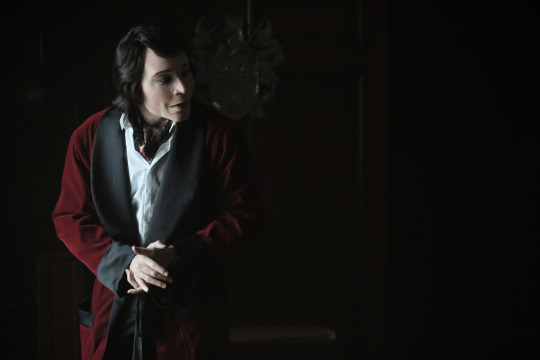
1- Teddy Perkins (Atlanta)
Temporada 2 - Episódio 6
Escrito por: Donald Glover
Realizado por: Hiro Murai
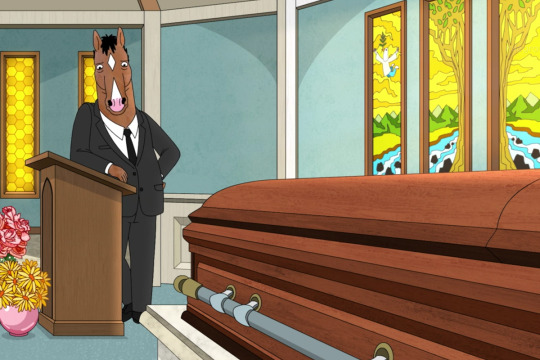
2- Free Churro (Bojack Horseman)
Temporada 5 - Episódio 6
Escrito por: Raphael Bob-Waksberg
Realizado por: Amy Winfrey

3- START (The Americans)
Temporada 6 - Episódio 10
Escrito por: Joe Weisberg & Joel Fields
Realizado por: Chris Long
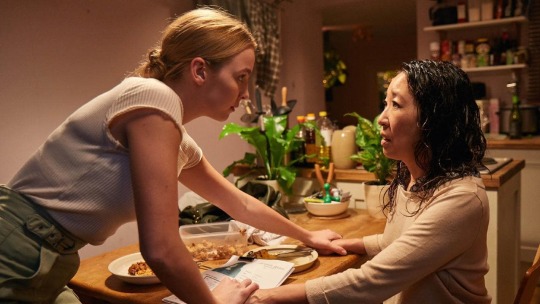
4- I Have a Thing About Bathrooms (Killing Eve)
Temporada 1 - Episódio 5
Escrito por: Phoebe Waller-Bridge
Realizado por: Jon East
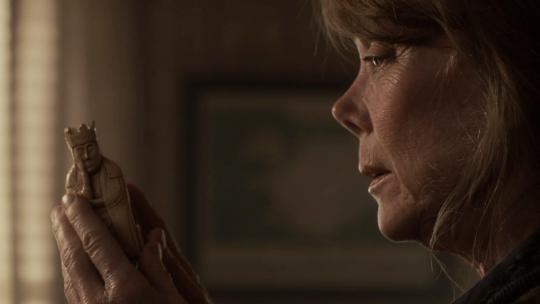
5- The Queen (Castle Rock)
Temporada 1 - Episódio 7
Escrito por: Sam Shaw
Realizado por: Greg Yaitanes

6- Kiksuya (Westworld)
Temporada 2 - Episódio 8
Escrito por: Carly Wray & Dan Dietz
Realizado por: Uta Briesewitz
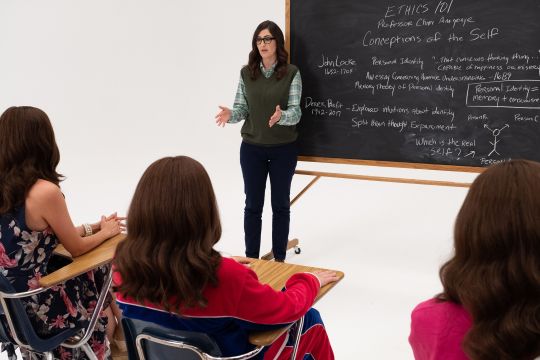
7- Janet(s) (The Good Place)
Temporada 3 - Episódio 10
Escrito por: Josh Siegal & Dylan Morgan
Realizado por: Morgan Sackett

8- The Good Twin (GLOW)
Temporada 2 - Episódio 8
Escrito por: Rachel Shukert & Nick Jones
Realizado por: Meera Menon

9- Not Yet (One Day At A Time)
Temporada 2 - Episódio 13
Escrito por: Gloria Calderon Kellet & Mike Royce
Realizado por: Pamela Fryman
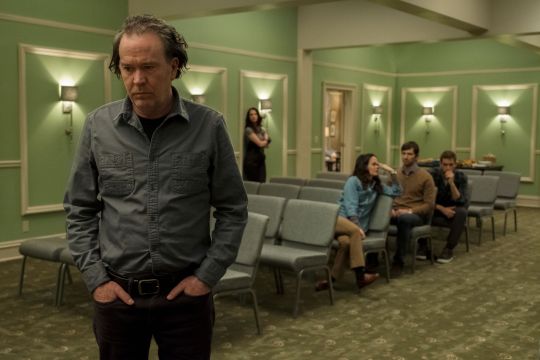
10- Two Storms (The Haunting of Hill House)
Temporada 1 - Episódio 6
Escrito por: Jeff Howard
Realizado por: Mike Flanagan
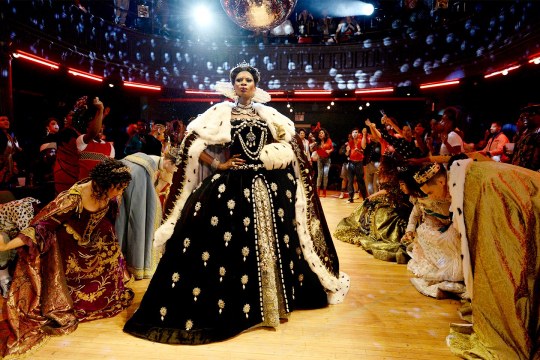
11- Pilot (Pose)
Temporada 1 - Episódio 1
Escrito por: Ryan Murphy, Brad Falchuk & Steven Canals
Realizado por: Ryan Murphy
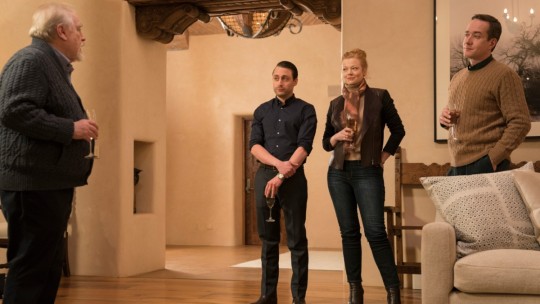
12- Austerlitz (Succession)
Temporada 1 - Episódio 7
Escrito por: Lucy Preble
Realizado por: Miguel Arteta
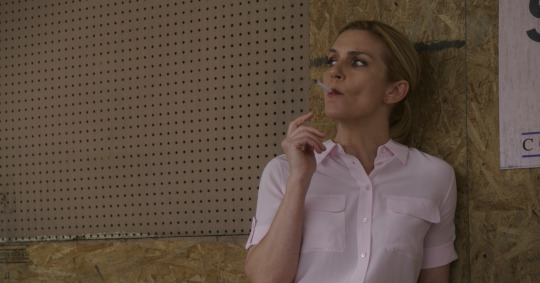
13- Coushatta (Better Call Saul)
Temporada 4 - Episódio 8
Escrito por: Gordon Smith
Realizado por: Jim McKay
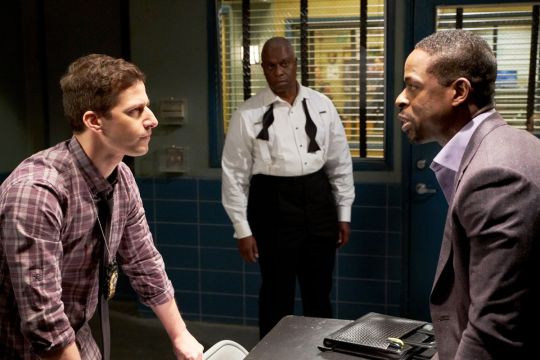
14- The Box (Brooklyn Nine-Nine)
Temporada 5 - Episódio 14
Escrito por: Luke Del Tredici
Realizado por: Claire Scanlon
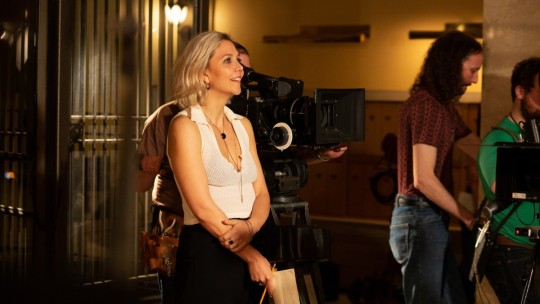
15- We're All Beasts (The Deuce)
Temporada 2 - Episódio 6
Escrito por: George Pelecanos & David Simon
Realizado por: Susanna White
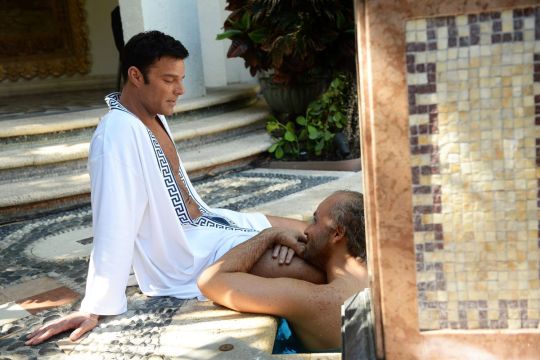
16- The Man Who Would Be Vogue (The Assassination of Gianni Versace)
Temporada 2 - Episódio 1
Escrito por: Tom Rob Smith
Realizado por: Ryan Murphy

17- Chapter 9 (Legion)
Temporada 2 - Episódio 1
Escrito por: Noah Hawley & Nathaniel Halpern
Realizado por: Tim Mielants

18- Simone & Midway To Midtown (The Marvelous Mrs. Maisel)
Temporada 2 - Episódios 1 & 2
Escrito por: Amy Sherman-Palladino
Realizado por: Amy Sherman-Palladino
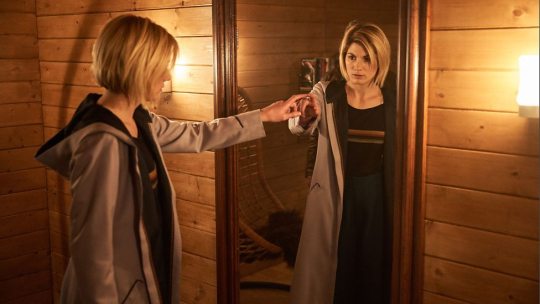
19- It Takes You Away (Doctor Who)
Temporada 11 - Episódio 9
Escrito por: Ed Hime
Realizado por: Jamie Childs
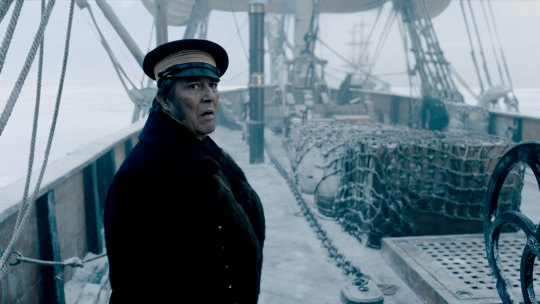
20- Go For Broke & Gore (The Terror)
Temporada 1 - Episódios 1 & 2
Escrito por: David Kajganich & Soo Hugh
Realizado por: Edward Berger

21- If I Was An Elf I Would Tell You (Mozart in the Jungle)
Temporada 4 - Episódio 2
Escrito por: Will Graham
Realizado por: Will Graham

24- Two Portraits (The First)
Temporada 1 - Episódio 5
Escrito por: Francesca Sloane
Realizado por: Deniz Gamze Ergüven
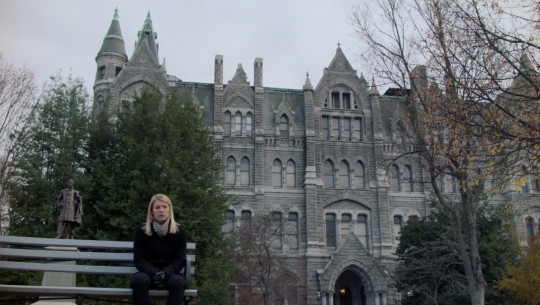
23- Species Jump (Homeland)
Temporada 7 - Episódio 6
Escrito por: Anya Leta & Ron Nyswaner
Realizado por: Michael Offer

24- La Dolce Vita (Trust)
Temporada 1 - Episódio 3
Escrito por: Simon Beaufoy
Realizado por: Danny Boyle

25- USS Calister (Black Mirror)
Temporada 4 - Episódio 1
Escrito por: William Bridges & Charlie Brooker
Realizado por: Toby Haynes
#O Melhor de 2018#Os Melhores de 2018#2018#TV#Shows#Series#Best of 2018#Séries#Televisão#episódios#Episodes#Black Mirror#Dark#Netflix#Homeladn#Showtime#Trust#Fx#Mozart in the Jungle#Amazon#The Terror#AMC#Doctor Who#BBC#BBC America#The Marvelous Mrs Maisel#Legion#The Assassination of Gianni Versace#The Deuce#HBO
3 notes
·
View notes